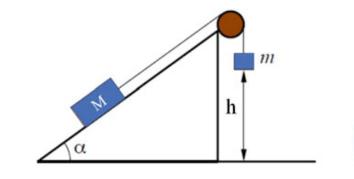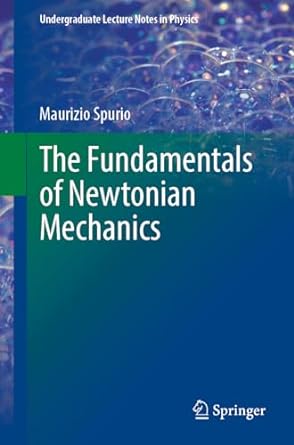With reference to the figure and data from the Exercise 4.4, determine the work done by the
Question:
With reference to the figure and data from the Exercise 4.4, determine the work done by the frictional force when the bucket dropped \(h=42 \mathrm{~cm}\). Find the velocity required in step 3 ) using conservation of energy.
Exercise 4.4
Consider a plane, inclined at an angle \(\alpha=20^{\circ}\) to the horizontal, rough, on which is placed a mass \(M=910 \mathrm{~g}\). The latter is connected to a bucket of mass \(m=490 \mathrm{~g}\) by an inextensible rope of negligible mass and a pulley, also of negligible mass, free to rotate without friction about its axis. Initially the system, shown in Fig. 4.14 (left), is at rest.
1. Calculate the tension of the rope and the frictional force acting on \(M\), specifying for this the direction and magnitude. Next, sand is slowly poured into the bucket, with negligible velocity. When the mass of the poured sand is equal to \(m_{s}=78.0 \mathrm{~g}\), the two masses \(m\) and \(M\) begin to move.
2. Calculate the coefficient of static friction \(\mu_{s}\) between \(M\) and the plane. As soon as \(m_{s}\) has been reached and the system begins to move, the sand is no longer spilled. The dynamic friction coefficient \(\mu_{d}\) is equal to \(80 \%\) of \(\mu_{s}\). Calculate:
3. the speed with which \(M\) moves when the bucket has dropped \(h=42 \mathrm{~cm}\).

Step by Step Answer:






